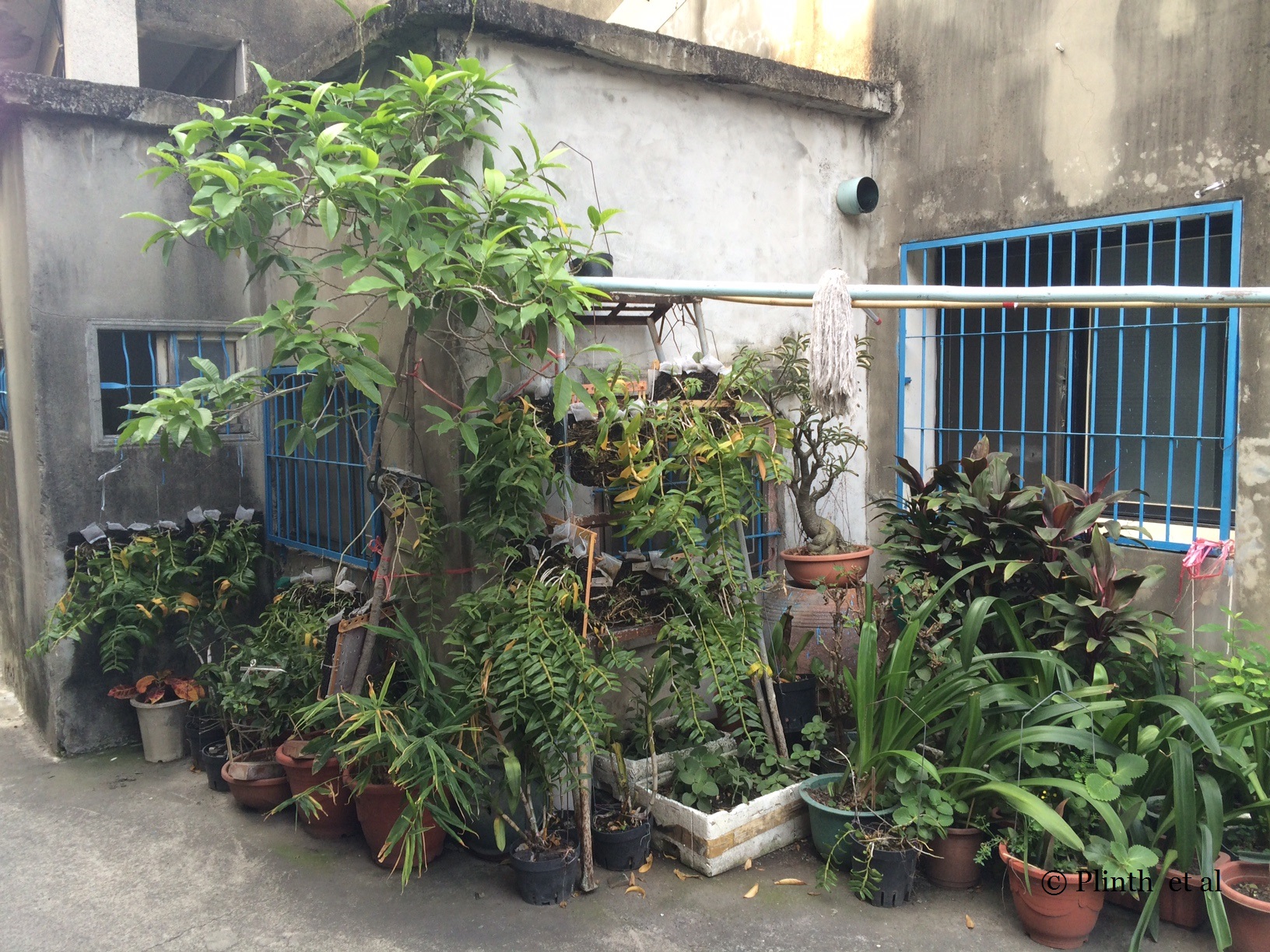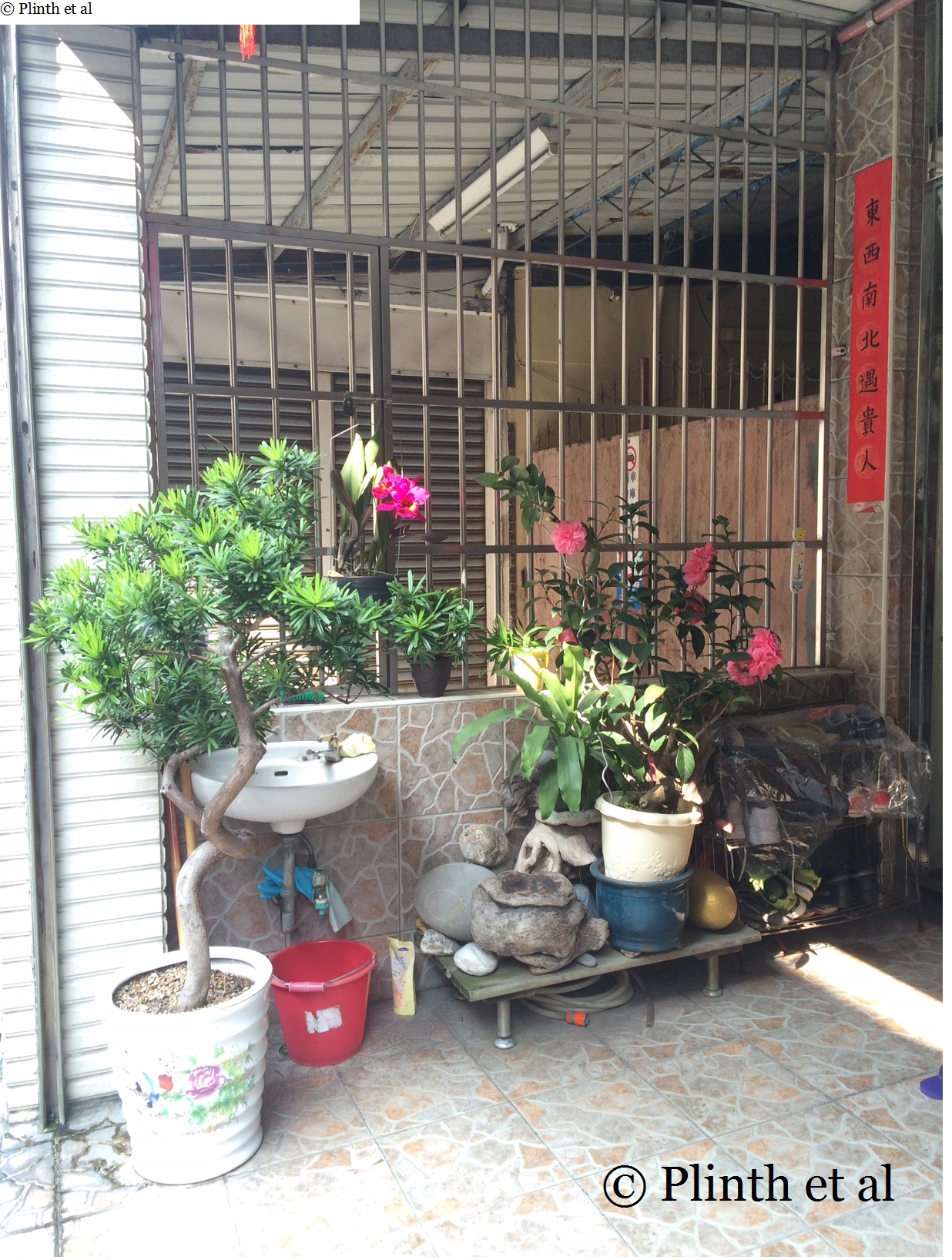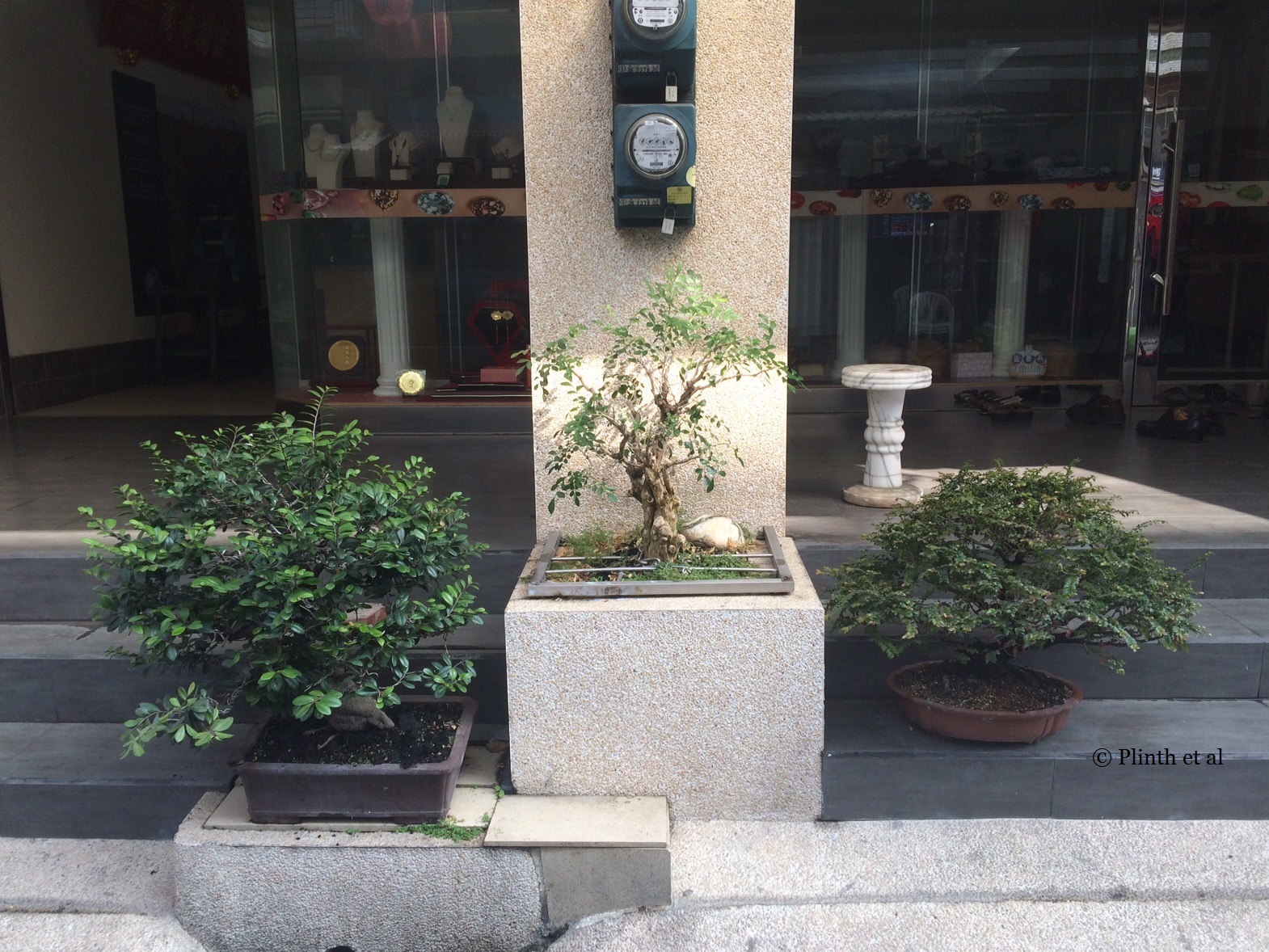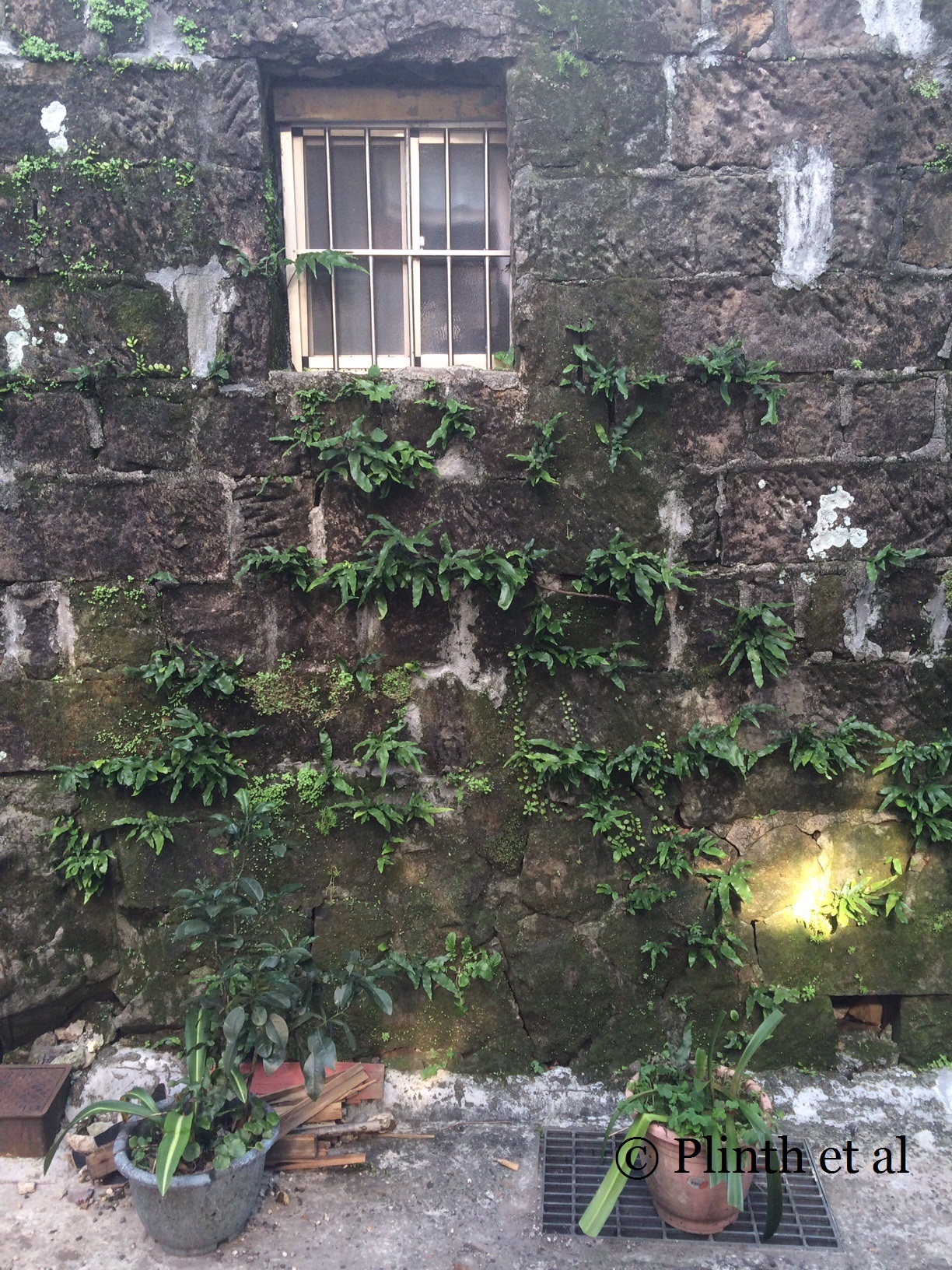Terraces of Taiwan Part 2
The multitude of plants basking in shade or sun never bores me during walks through the lane ways of Taiwan because they give some insight of people's affinity with plants and their ways of growing them in limited spaces. I remember being led upstairs to the rooftop terrace where hundreds of orchids, all hung from a trellis, were growing and flowering under a shade cloth that protected them from the intense tropical light.

Three houseplants, popular ornamentals for celebrations and house warming, are recycled as long-lived container plants for the terrace. The first two in the center is Plerandra elegantissima (false aralia) while the two on the right side are Pachira aquatica and Zamioculcas zamiifolia, an aroid. Pachira aquatica, commonly known as Malabar chestnut, is often sold as "money tree" because it is thought to bestow financial prosperity. Sometimes the plants are seen with tied red ribbons and placed outside of businesses. It's funny sight to see plants sprouting red ribbons during Chinese New Year.
Dendrobrium aphyllum are cultivated on tree fern slabs that are hung from the poles. This orchid, native to India, Myanmar, Thailand, and south China, will eventually form naked pseudobulbs after the new shoots seen here shed their leaves. These pseudobulbs become covered with hundreds of lavender flowers with white lips in winter (late February to January). Pots of Hippeastrum (amaryllis) and Cordyline fruticosa complete the terrace garden, and a large Magnolia champaca will produce strongly scented white to creamy yellow flowers.
This terrace is more modest than the previous one, but it does not suffer from a lack of interest . A gnarled Podocarpus macrophyllus has been carefully pruned to keep its manageable size, and a flowering Cattleya orchid has been brought out from its growing area elsewhere. To top it off, large pink blossoms cover a camellia next to a sock rack.
A beautiful Clerodendrum wallichii steals the attention from chrysanthemums, staghorn ferns, pitcher plants, and succulents in the same storefront featured in this past Tuesday's Terrace's Jiufen plant shop.
Bonsai had its origins in the Chinese penjing, which the Japanese later appropriated as their own. The owner of this terrace erred from having a miscellany or hodgepodge of plants, opting instead for elegant simplicity and cleaner lines in this display of three penjing. Surprisingly the display looks contemporary and well suited to the building steps.
Sometimes nature intervenes, putting its 'graffiti' on human dwellings. The crevices of this stone wall have provided ideal moist and cool niches for these ferns and mosses. Allowing nature to express its creativity this fashion is no different from our approach towards self-seeding in the garden. No precise planning can replicate the ingenuity with which plants deposit themselves in unlikely places. ~ Eric










